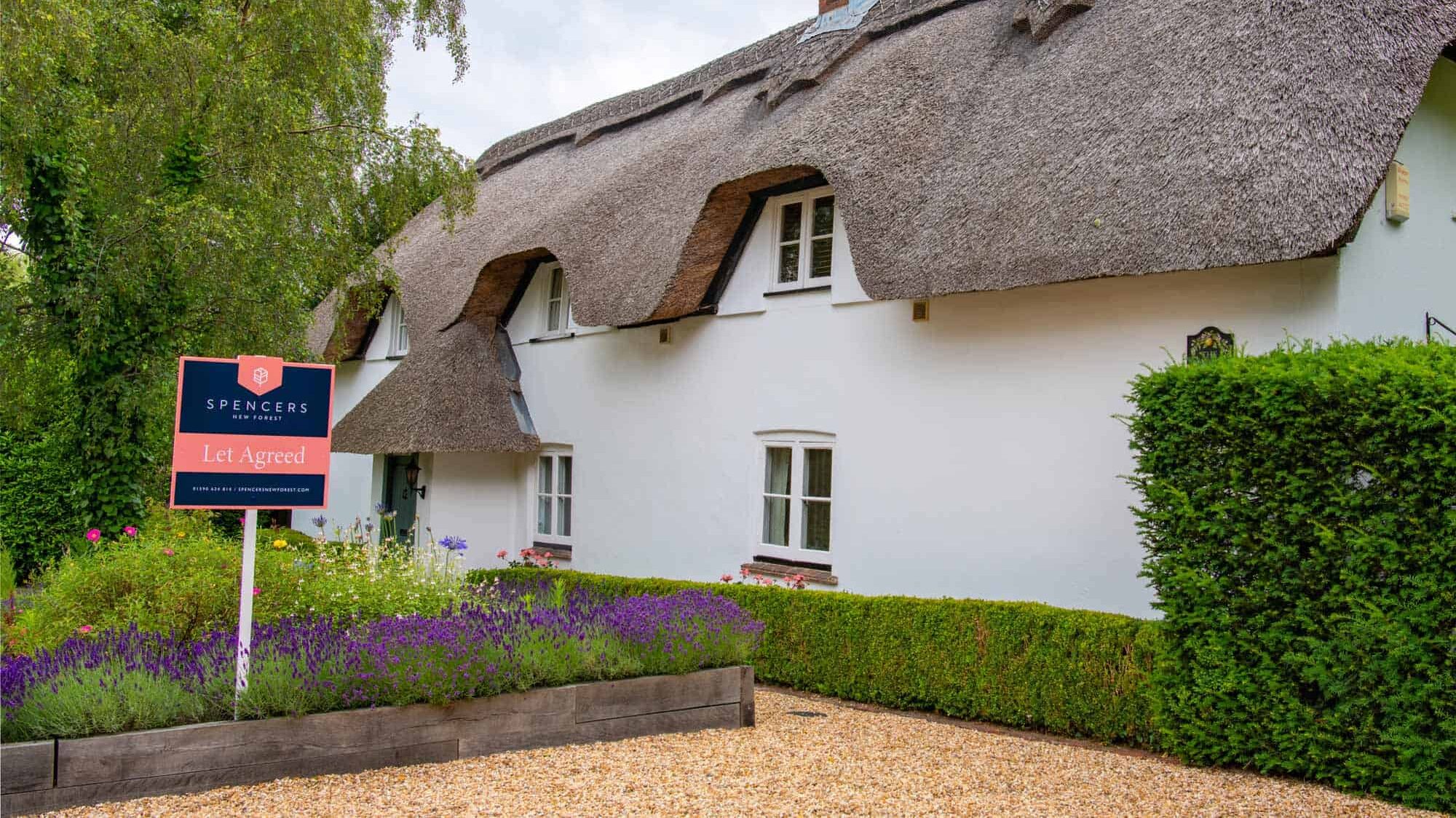Evocative of the countryside and days gone by, a thatched roof is a coveted original feature. Thatch has been used as a roof covering for millennia and was the dominant material across much of the UK and Europe up to the late 19th century. A large number of charming thatched properties remain today, including across the New Forest. The main thatching materials used in the UK today are cereal straws and water reeds.
Historic England recognises the significance of thatched properties as a rich regional tradition that contributes to the local distinctiveness of buildings. They encourage the conservation of traditional thatch and actively seek to conserve the character of historic buildings, protect any material of archaeological importance and sustain traditional techniques and skills.
Whilst thatched properties epitomise the quintessential countryside home, taking on the maintenance of these traditional homes can feel daunting. If you are thinking of purchasing a property with a thatched roof, here are some top tips so, you will know what to look for and what questions to ask before you take the plunge…
Straw and reed are natural products which, under any conditions, will gradually wear through the actions of weathering and the processes of natural decay. You should expect from time to time, it will require some maintenance or to be replaced. Many factors contribute to the life expectancy and durability of an individual thatched roof. Factors such as local geographical conditions, maintenance history, aspect, climate, original thatch technique and birds/vermin will all play a part.

Dodgy wiring and thatched roofs don’t mix! In addition to your survey, get a qualified electrician to assess. Most insurers will require an inspection of electrical circuits every 5-10 years going forwards.
It’s a common belief that thatched properties mean sky-high prices, but this isn’t necessarily the case. To receive an accurate quote, approach insurers who specialise in thatch properties, a full list can be found here. It’s important to get the right cover based on your property and circumstances, as undervaluation may affect the settlement in the event of claims.
Just because it looks dirty does not necessarily mean it needs re-thatching. Simple repair and strengthening or just a good clean is often sufficient. Get a professional thatcher in to judge; if anything does need doing you may be able to negotiate the asking price with the vendors.
Thatching is a skill that is acquired over time. The National Society of Master Thatchers is a great resource for searching for a skilled and registered thatcher.
More than 75% of all thatched properties in England and Wales are listed on The National Heritage List for England . If yours is one of them or is situated within a conservation area, there will be certain guidelines when it comes to re-thatching. Different styles and materials will require permission from your local authority.
As with any home improvement, it’s always a good idea to get competitive quotes as they can vary widely. Ideally, you would want at least three from respectable thatchers – ask the owners of neighbouring thatched houses for recommendations.
If you have an open fire or wood burner, make sure you have your flue and chimney inspected by a professional to ensure that the brick or stonework and lining are in good condition. Make sure you take all the usual precautions such as having your chimney swept at least once a year and ensuring you have a working fire alarm fitted.
For those contemplating a move to an idyllic thatched home, here are just a few of our favourites currently on the market with Spencers New Forest.
Keep up to date with Spencers Estate Agents, Lymington for news and updates in the local area.